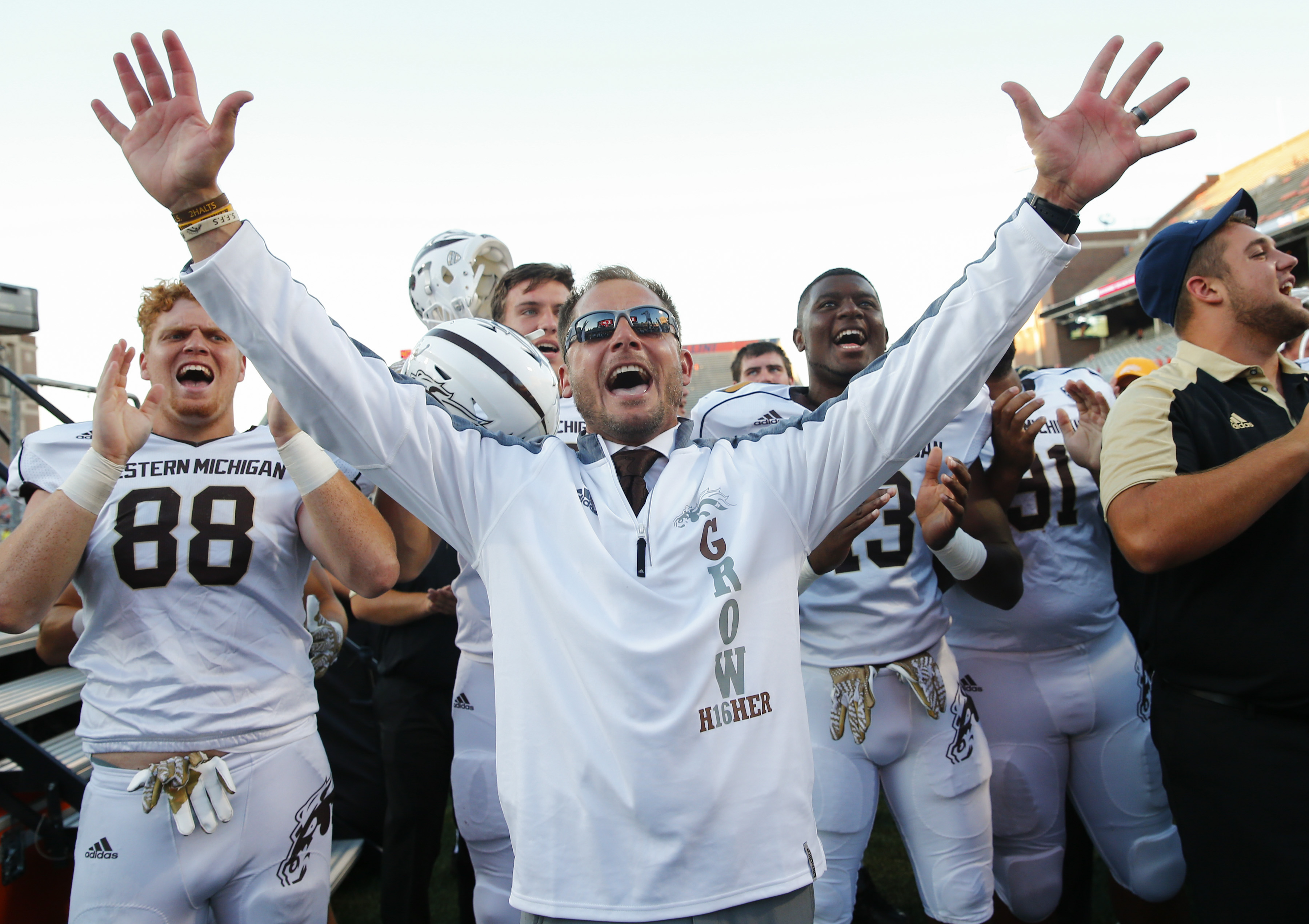The Group of Five receives just one spot in college football’s “New Year’s Six” bowl structure each year. So while Western Michigan tries to complete a 14-0 season against Wisconsin in this year’s Cotton Bowl, the rest of the G5 will be busy playing in lesser bowls.
Just because those games are earlier on the schedule, however, it doesn’t mean they lack importance. In fact, the G5 has provided quite the intriguing lineup for the 2016-17 bowl season. Some of the highlights:
Las Vegas Bowl: Houston vs. San Diego State
Camelia Bowl: Appalachian State vs. Toledo
Poinsettia Bowl: BYU vs. Wyoming
Armed Forces Bowl: Louisiana Tech vs. Navy
And there are plenty more intriguing matchups down the line as well.
These games, while not “playoff” games, sort of serve as de facto elimination games to see which G5 schools are the best of the rest, so to speak. WMU already earned its title atop the non-power conferences, but the others still put in quality seasons of their own. Many of them get to prove it this year, not against a ninth-place SEC team or a sixth-place Pac-12 squad, but against other strong programs from the sport’s supposedly lesser leagues.
http://gty.im/497175314
Houston is perhaps the most talented G5 team on paper and they’ll go up against an 11-2 San Diego State team that’s among the most consistent programs in the country in recent years. BYU is an independent, national brand and they face an emerging Mountain West power (and runner-up) in Wyoming. Louisiana Tech and Navy both lost the respective conference championship games. Appalachian State and Toledo were both top two in their own leagues as well.
With so many high-profile G5 matchups, it makes you wonder if these conferences should just hold a mini-playoff each postseason?
It doesn’t have to include a selection show, or weekly rankings, or even be called a playoff, really. But a G5 “playoff,” staging bowl games against conference champs and other top squads from those leagues, could give new life to the lower rungs of the bowl system.
If they’d adopted something like it this year, here’s how things could’ve shaken out:
Temple (AAC champ) vs. Arkansas State (Sun Belt champ)
San Diego State (MWC champ) vs. Western Kentucky (Conference USA champ)
Maybe the winners are allowed to play in a second bowl game afterward, or maybe they’re not (probably not). Either way, these contests are instantly compelling with stakes, bragging rights, and some national exposure in the balance. Beyond the New Year’s Six carrot dangled out for these programs each year, it’s a secondary goal to end up in one of these games. It’s also a potential moneymaker for ESPN, the bowl season’s benefactor. So why isn’t it being done already?
http://gty.im/492169284
Most of that answer lies in existing bowl ties. Every game starts off with pre-existing ties negotiated with conferences to secure postseason slots for their members well in advance. Some of these are regional in nature. Others are based on tradition. But at the moment, they’re locked in place until contracts expire or leagues can’t fulfill their total number of bowl slots. Leagues haven’t been able to fulfill their total number of bowl slots lately.
With the number of conference games increasing, scheduling getting tougher and losses piling up, these pre-set bowl matchups have been disregarded more and more each season. Even dragging 5-7 teams into the mix isn’t helping keep these contractual matchups intact. It’s increasing the frequency with which those ties are broken.
The other answer as to why a G5 playoff hasn’t gotten off the ground is because it could not only distract from the brand of the actual College Football Playoff, but also further outline the differences between the power and non-power conferences. The sport’s continued growth and popularity is based on the prospect that “anyone” can be successful, even if that’s far from the case in reality. Creating a clear and definite ceiling on these G5 schools would be counterproductive to that as well.
That’s why it won’t happen, though, not why it shouldn’t. And if you decided to expand the idea even further, it’s easy to see why it should, for everyone’s sake.
http://gty.im/617322842
Expanding beyond the two games lined up above, you could further work to include more teams in this arrangement as a sort of postseason version of ESPN’s old BracketBusters college basketball event. While that was cancelled after 2012-13, the spirit of it – giving increased exposure to smaller schools – could continue today.
Beyond the games between champions, other bowls could match up other similarly-placed opponents. Another three games pitting the second-place teams in each G5 league (plus either BYU or a well-regarded third-place team) against one another would be nearly as watchable as the first set of games. They’re fun matchups full of players 90 percent of viewers have never heard of, but they’ll attract viewers with the real or imagined stakes that apply.
These games don’t even have to involve brand-name G5 schools, either. Look at SB Nation’s bowl watchability rankings for this postseason. Some of the best ones are these all-G5 games, and others like Old Dominion-Eastern Michigan (zero combined bowl trips in my lifetime up to now) have sleeper potential.
Whether it’s a playoff, or just more games between these G5 powers, there are still plenty of ways to make the already zany bowl season even more entertaining and meaningful for teams and fans alike. Because this is college football, it’ll probably take years to implement. But perhaps this year’s matchups like Houston-SDSU and Appalachian State-Toledo can start to set the groundwork for what could be a major opportunity going forward.







